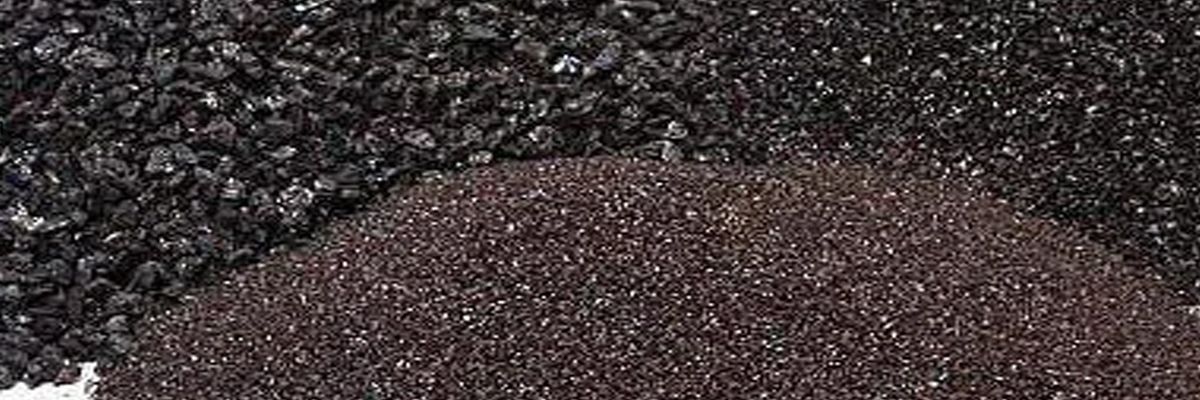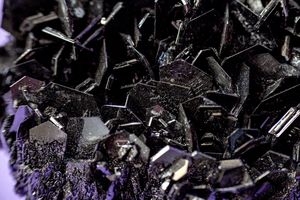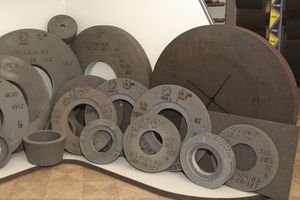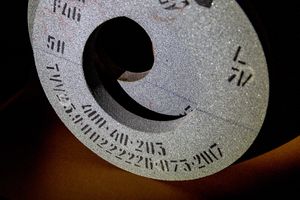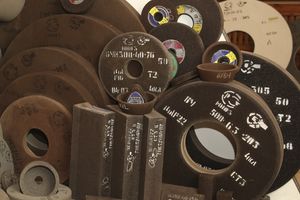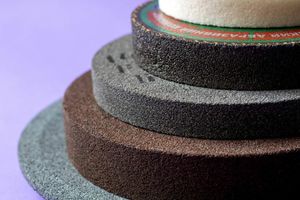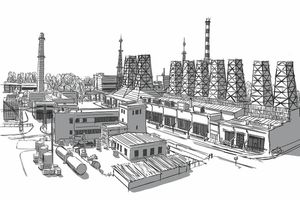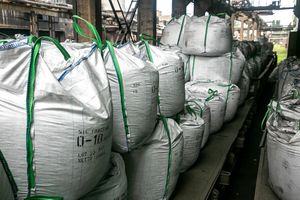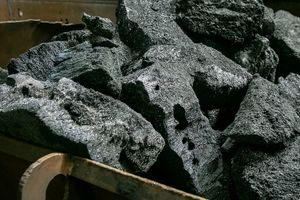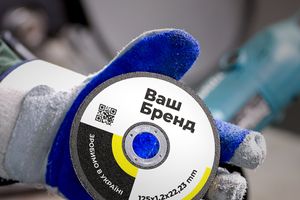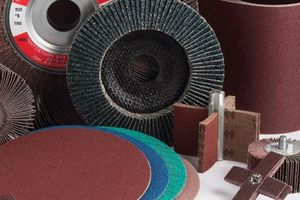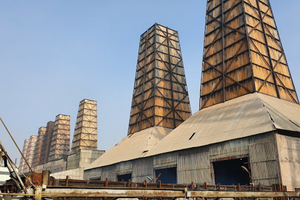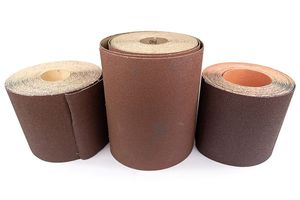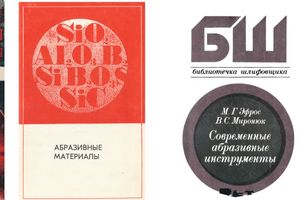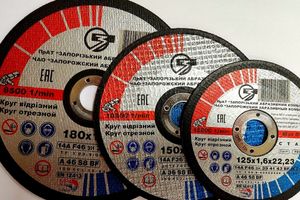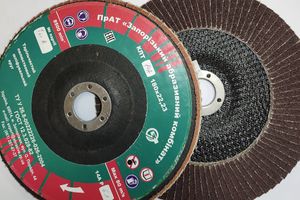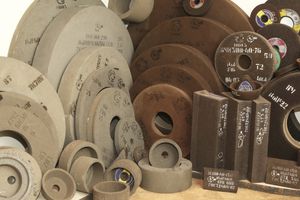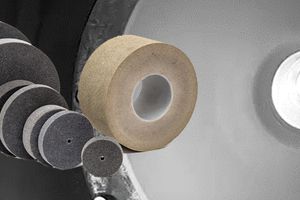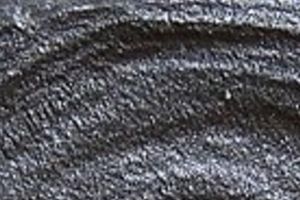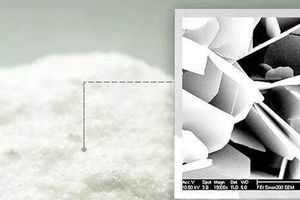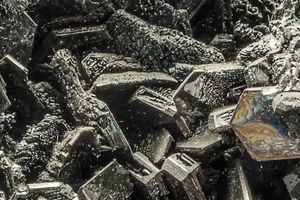Electrocorundum is a crystalline aluminum oxide, the granules of which have a strength of 9 units on the Mohs scale.
The group of abrasive materials used in sandblasting surfaces includes a wide range of jet abrasives based on aluminum oxide, among which the group of electrocorundum stands out. In turn, electrocorundums are usually divided depending on the percentage of alumina (aluminum oxide, Al2O3, corundum) in the abrasive composition and production technology.
White electrocorundum is used for grinding cooled, high-carbon and high-speed steel. It is also widely used in the manufacture of ceramic and refractory parts. It can be used on catalyst carriers and special grinding machines.
Features and advantages of this material:
- high resistance to chemical, temperature and climatic influences;
- preservation of the crystal structure when heated during operation;
- the running size of the crystals is 0.6-0.8 mm;
- homogeneity in mineralogical and chemical composition;
- minimal inclusion of foreign impurities (no more than 1%).
The classic color of electrocorundum is white. The grain size according to the standard of the Federation of European Manufacturers of Abrasives (FEPA) is as follows: the minimum value is F16, the maximum is F220. The features and areas of application directly depend on the grain size.
Common types of electrocorundum
Today, manufacturers offer a large number of types of electrocorundum, each of which has its own properties and purpose:
- normal or alundum is suitable for grinding metal surfaces;
- white or corrax is used for cleaning products made of steel and hard alloys;
- monocrystalline or monocorundum is intended for processing heat-resistant alloy steels;
- Titanium electrocorundum is used for grinding hardened steels under high loads.
In addition to the listed varieties, there are others: formocorundum, spherocorundum, technical ruby, titanium chromium and magnesium-silicon varieties. A popular brand is 25A.
Abrasive and sandblasting materials based on aluminum oxide – electrocorundum and its varieties
Electrocorundum (alundum, aloxite) is crystalline aluminum oxide, which is artificially obtained by melting alumina and alumina-containing raw materials in a continuous manner in arc furnaces with subsequent crystallization of the substance. After hardening, the synthesized corundum acquires high hardness and strength, which is second only to diamond. The hardness index of electrocorundum has a value of 9 on the Mohs scale (the ninth natural reference mineral on the mineralogical hardness scale out of ten is corundum). The more aluminum oxide contained in electrocorundum, the harder, stronger and whiter in color the resulting corundum abrasive grain is.
Since electric corundum is produced in electric arc furnaces, due to the method of producing this corundum material using electricity, namely the thermal effect of an electric arc during the melting process, the name of artificial corundum contains the addition “electro”.
When producing electrocorundum at the time of melting, it is easy to obtain an abrasive of specified parameters by introducing into the melt a set of alloying chemical elements that provide additional hardness, strength and heat resistance. As a result of such operations, a new abrasive material with improved properties is obtained, which belongs to the group of modified varieties of electrocorundum, called alloyed electrocorundum.
Types of abrasive electrocorundum based on modifications of aluminum oxide
Electrocorundum normal (alundum)
Normal electrocorundum is a type of electrocorundum containing from 91% to 96% Al2O3 in its composition and smelted by reduction smelting from aluminum-containing bauxite. This electrocorundum abrasive has high hardness and is suitable for grinding metal surfaces. Grades of normal electrocorundum abrasive are 12A, 13A, 14A, 15A, 16A. The density of normal electrocorundum ranges from 3.8 g/cm³ to 3.9 g/cm³; microhardness – approximately from 18.6 GPa to 19.6 GPa (from 1900 kgf/mm² to 2000 kgf/mm²). The color of normcorundum is shades of brown from light to dark in correlation with the content of impurities.
Electrocorundum white (corrax)
White electrocorundum (corrax), produced in electric arc furnaces by smelting pure alumina (the content of corundum aloxide in alumina is ≈98-99%) and containing about 99% Al2O3 in its composition, is suitable for cleaning surfaces made of very hard alloys and steel, comparable in strength with corrax stainless steels. This artificial corundum abrasive is used to perform sandblasting work on grinding surfaces.
White electrocorundum is easy to polish glass and metal, genuine leather and wood. In addition, the material is used in the production process for the production of ceramic products (filler), in foundries to ensure a non-stick effect, and in powder metallurgy.
Based on this material, a wide range of abrasive pastes and bars are produced for grinding various materials and products. Grades of white electrocorundum abrasive are 22A, 23A, 24A, 25A (listed in order of increasing percentage of aluminum oxide and corresponding increase in quality). The density of white electrocorundum ranges from 3.9 g/cm³ to 3.95 g/cm³; microhardness – from 19.6 GPa to 20.9 GPa (from 2000 kgf/mm² to 2100 kgf/mm²).
Monocrystalline electrocorundum (monocorundum)
Monocrystalline electrocorundum (monocorundum) is produced by melting bauxite with iron sulfide, anthracite or coke in electric furnaces. The resulting blocks disintegrate into crystals without crushing after exposure to ordinary water. The abrasive contains about 96.5% Al2O3. Monocorundum abrasive is indispensable for grinding heat-resistant, acid-resistant and structural alloy steels and alloys. Brands of monocrystalline electrocorundum abrasive are 43A, 44A, 45A. The density of monocorundum abrasive ranges from 3.94 g/cm³ to 4 g/cm³; microhardness of monocorundum – from 22.6 GPa to 23.5 GPa (from 2300 kgf/mm² to 2400 kgf/mm²).
Chromium electrocorundum (technical ruby)
Chromium electrocorundum (technical ruby, electroruby) is one of the synthetic abrasive materials of the group of alloyed electrocorundums, which is obtained by melting alumina with the addition of chromium oxide. This technology makes it possible to obtain an abrasive with high quality indicators of strength and abrasive ability. Electrorubin contains from 91% to 98% Al2O3. Grades of chromium electrocorundum abrasive are 32A, 33A, 34A. The density of chromium electrocorundum ranges from 3.95 g/cm³ to 4 g/cm³; microhardness – from 19.6 GPa to 22.6 GPa (from 2000 kgf/mm² to 2300 kgf/mm²). Chromium oxide gives the abrasive material a color ranging from pink to deep ruby.
Titanium electrocorundum
Titanium electrocorundum is another representative from the group of alloyed electrocorundums, in which corundum is smelted with the addition of titanium oxide. The content of Al2O3 abrasive is from 91% to 98% (more often - not less than 97%) and titanium oxide - not less than 2%. The abrasive is suitable for cleaning metal surfaces with removal of an increased layer of top coating, as well as for grinding hardened steels under high loads.
The grade of abrasive corresponding to titanium electrocorundum is 37A. Density from 3.95 g/cm3 to 4 g/cm3; The microhardness of titanium electrocorundum abrasive material varies from 19.6 GPa to 22.6 GPa (from 2000 kgf/mm2 to 2300 kgf/mm2). Titanium oxide determines the gray-blue tint in the color of the grains.
Zirconium electrocorundum
Zirconium electrocorundum is obtained by melting raw alumina with a small content of zirconium oxides or baddeleyites. The abrasive contains from 60% to 75% Al2O3 (the remaining proportion is zirconium oxide and impurities). The grade of zirconium electrocorundum abrasive is 38A. The density of zirconium electrocorundum abrasive ranges from 4.05 g/cm3 to 4.15 g/cm3; microhardness – from 22.6 GPa to 23.5 GPa (from 2300 kgf/mm2 to 2400 kgf/mm2). This type of corundine is characterized by a gray-pink color.
In addition to the most commonly used electrocorundum abrasives listed above, there are other modifications - such as spherocorundum, molded corundum, titanium chromium electrocorundum, magnesium-silicon electrocorundum and others.
